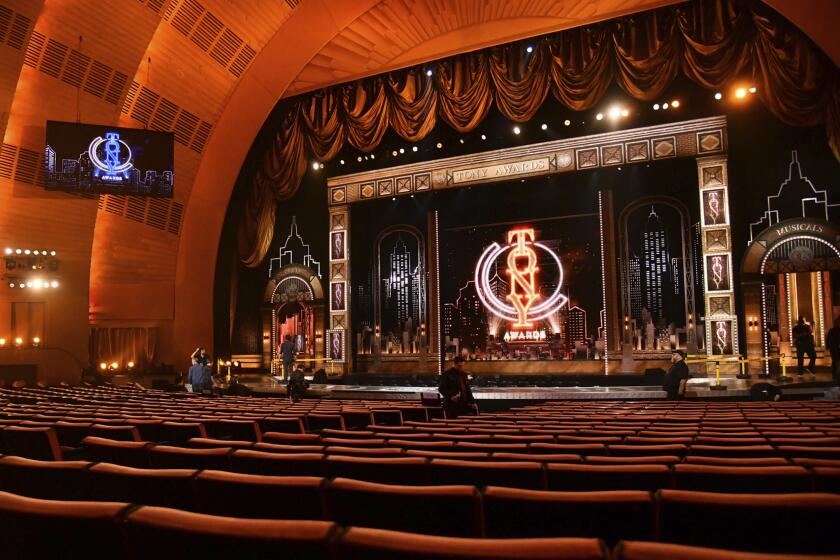A Portrait of the Pope as a Dying Man
- Share via
“E troppo vero,” the pope said of the painting: “It is too real.” That would be Pope Innocent X, commenting on his own portrait by Diego Velazquez. The vicar of Christ on Earth, as the Spanish master captured him, has the shrewdly appraising eye of a police interrogator. In a crimson cape, on a crimson throne, he radiates worldly power and perfect self-possession. His hands, jeweled and manicured, dangle with languid ease from the snowy lace of his sleeves. The pope knows who he is, and, beware: He knows who you are too.
What would Velazquez have made of John Paul II? In his prime, John Paul -- like Innocent and even more than Innocent -- cut a fine figure. Was he not once named best-dressed man of the year? He had, in his prime, a look that could kill. One saw it in 1983 when he faced down the fiery Sandinista leader Daniel Ortega at a public Mass in Nicaragua. At what was to have been the moment of confrontation, the fearless revolutionary, facing that look, suddenly seemed a querulous child.
Innocent (1574-1655) came of age in Italy at a time when Protestantism, having engulfed Northern Europe, threatened to engulf all of Europe, but he lived to see Protestantism contained, as the 1648 Peace of Westphalia ended Europe’s religious wars in a draw. John Paul came of age in Poland at a time when communism, having engulfed Eastern Europe, threatened to engulf all of Europe, but he lived to see the Soviet Union in retreat and its empire demolished. Triumphant? Not quite, either one, and yet noticeably undefeated. If any artist could build the historical complexity of such a moment into a portrait, it was and would be Velazquez.
And yet the Velazquez moment for John Paul is now 15 years behind us. It might take a Lucian Freud to capture the spectacle of grotesquerie and human ruin that has lately filled the balcony above St. Peter’s Square. The pope, suffering from advanced Parkinson’s disease, made the choice to die before our eyes.
What have his fellow PD sufferers thought of his way of coping with their common condition? No poll has been taken, but a relative of mine who suffers from the disease wrote me just days ago in dismay that what was done to Terri Schiavo -- by which my relative meant a prolongation of death -- might be forced upon her. She has placed in her refrigerator a copy of her living will, her do-not-resuscitate statement (now strengthened by a do-not-feed codicil), her list of prescription drugs, her power of attorney, and the like. Paramedics go first to the refrigerator, she explained, “to see if you have any drugs they need to know about.” If you put a message on the door and keep your papers inside, you have a fighting chance of having your wishes honored.
“And then there is the pope!” her letter added. “He is obviously in the end stage of PD with difficulties in breathing and swallowing, which is all a part of PD. He is either in denial -- or he is a control freak -- when he could have been a spokesperson for PD. Of all people, he could have brought this ugly disease into the public view! But I guess he believes in suffering and not in science.”
The language was candid and harsh. Most of us, seeing the pope, have felt pity and perhaps questioned whether he has been fully in charge of his own person. But my relative understandably felt a grieving and angry sense of an opportunity for leadership lost. Had the pope spoken of his disease often and by name, his candor might have mobilized new scientific resources. In our world, things often work that way. To which I would add that because there is no Christian whose dying is so closely watched as the pope’s, there is no Christian better placed to teach again the ancient lesson that earthly life is not to be clung to.
As St. Paul put it in 2 Corinthians 5, “We are well aware that when the tent that houses us on Earth is folded up, there is a house for us from God, not made by human hands but everlasting, in the heavens.... In this present tent, we groan under the burden, not that we want to be stripped of our covering, but because we want to be covered with a second garment on top, so that what is mortal in us may be swallowed up by life. It is God who designed us for this very purpose, and he has given us the Spirit as a pledge.”
For true Christians, the culture of life that matters is the culture of eternal life. My mother recalls the death of a beloved nun, far gone with Alzheimer’s disease, who refused to eat or drink during the last two or three days of her life, saying only, “I want to go home.” For those gathered at her bedside, this was the testimony of the Spirit.
St. Paul does not hunger for power. He hungers, unapologetically, for release. His home is not in this world but in the next. The question that lingers about the pope’s passing is whether for him, too, this could have been the testimony of the Spirit -- this rather than a relentless emphasis on physical life. Then, the final transcendent resignation would require the rare talent not of a Velazquez but of a 21st century Rembrandt.
More to Read
The biggest entertainment stories
Get our big stories about Hollywood, film, television, music, arts, culture and more right in your inbox as soon as they publish.
You may occasionally receive promotional content from the Los Angeles Times.










